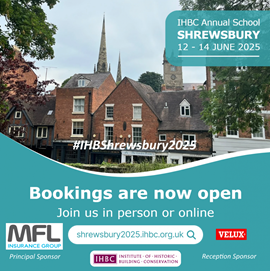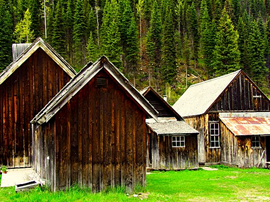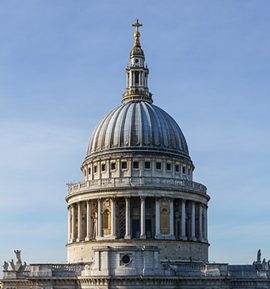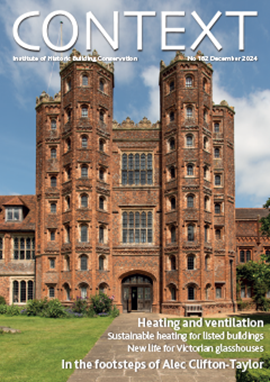Bats in churches
There was a risk of congregations walking away from churches made unusable by bats, and of bats being prevented from accessing crucial habitat. What could be done?
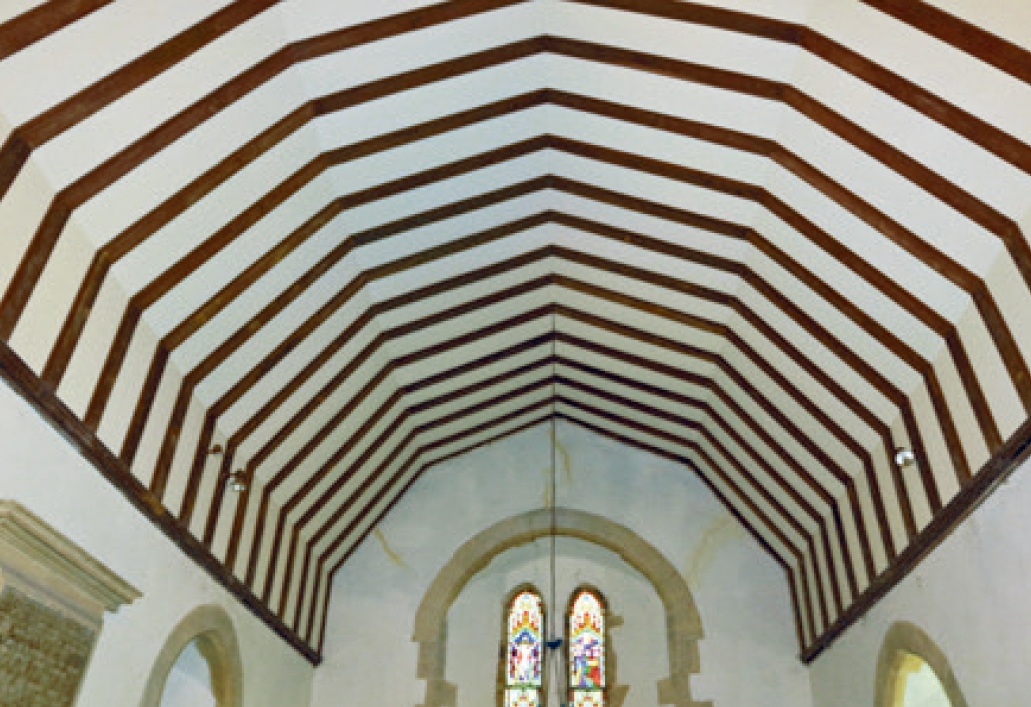
|
| Due to the large numbers of bats using St Lawrence in Radstone, services could no longer be held there. Following bat mitigation works, the church is back in use as a place of worship and community space. (Photo: Chris Damant, Bernwood Ecology). |
Contents |
Introduction
The 2019–2023 Bats in Churches project had its origins in decades of frustration, misinformation and distrust between the supporters of natural and built heritage environments. Bats and churches were both heavily reliant on the goodwill of volunteers to protect and care for them; the equally passionate volunteers all depended on professional expertise to keep their activities legal and each operated on shoestring budgets. Architects did not always understand the relevance of the Wildlife and Countryside Act when repairing church roofs and ecologists were not tuned in to the nuances of Faculty Jurisdiction. There was a real risk of congregations walking away from churches damaged or made unusable by bat colonies, and of bats being walled-in or prevented from accessing crucial habitat. Bat-people and church-people were equally outraged. Both felt nobody was listening.
In a spirit of collaboration, Natural England, the Church of England, Historic England, the Bat Conservation Trust and the Churches Conservation Trust came together to respond to the situation. After several years of consultation and research, the Bats in Churches project was developed, funded by the National Lottery Heritage Fund, project partners and grants. Bats in Churches identified over 100 churches where bats were making worship and community use of the building very challenging, historic fabric was being irreparably damaged and the morale of congregations was rapidly declining.
Five key workstreams were selected:
- Solving the conflict through practical listening, cleaning and capital works
- Community engagement, bringing together congregations, bat enthusiasts, local people and wider audiences
- Recruiting and training more bat volunteers to support churches dealing with bats
- A research programme, Church Bat Detectives, at three engagement levels to enable broad participation and contribute to national understanding
- Partnership across heritage and ecological bodies to demonstrate success, train architects and ecologists, and build local relationships to replace entrenched suspicions.
Bats in Churches brought the bat and building communities together, listened to their genuine frustrations and pooled their respective commitment to the benefit of wildlife, people and historic places. Working and learning together resulted in relationships and mutual respect, new shared ventures and, incredibly, fun.
Case study 1: Heritage
A maternity roost of Natterer’s bats roosted throughout St Margaret, Saxlingham, Norfolk. It was one of the most severely impacted churches in the project, prevented from carrying out any activities in the summer.
After full bat surveys, the initial plan was to contain the bats in a large ‘bat loft’ space around their main access point in the south transept. However, this transept was home to the organ, which limited the amount of void space that could be created and made access difficult. The architect and ecologist designed an alternative bat loft around a secondary access point in the north transept, already partly screened off to form the vestry, with ample space above.
A ceiling was installed over the vestry and the screen extended to fill the transept arch, enclosing the bats. A door allows access for cleaning and monitoring. Once the bats had acclimatised to the loft, known bat access points into the church were blocked. In the first year of exclusion the church was clean and bat-free for the first time in years.
Saxlingham shows that major capital works can be successful and discreet, if they are designed by ecologist, community and architect working closely together. The bat loft has changed the appearance of the church interior, but it was sensitively designed to match existing furnishings and is completely in keeping with the rest of the church.
Case study 2: Engagement
St Peter’s Church, Wintringham, Yorkshire is in the care of the Churches Conservation Trust. It is popular with walkers and visitors, but when it joined the Bats in Churches project it was cared for by just two volunteers. With large colonies of Natterer’s bats, pipistrelles and brown long-eared bats, keeping it clean and welcoming was a huge challenge. There was limited scope for capital works, so the focus was on community engagement and increasing the number of active volunteers.
For the first time, in 2022 the church held three roost counts for the National Bat Monitoring Programme with the local bat group. As well as counting bats, the focus was on creating a community event attended by children and families, with food and drink provided. By the third night over 30 people attended. These social and community occasions also provided valuable survey data for the church.
The pulling power of bats means that local people have rediscovered the church and its potential as a community space. The church has been revitalised for Easter and Christmas and joined the North Yorkshire Summer of Culture with a storyteller, a choir and two poets showing the adaptability of the space. It is the permanent home of the project’s artwork ‘On a Wing and a Prayer’. There is now a friends group of around 35 volunteers, all actively involved in running events and cleaning the church.
Case study 3: Volunteering
St Edmund’s Church in Egleton, Rutland, is a Grade I-listed church with a long history of housing bats, but over a nine-year period the numbers of soprano pipistrelles in the maternity roost increased significantly, with over 1,000 individuals present before pups were born.
Roosting in the nave roof void, bats were accessing the interior of the church through small gaps and a sizeable hole in the ceiling where plaster had fallen off. This led to large amounts of droppings and urine scattered around the church, an overpowering smell and bat welfare issues, with bats unable to find their way out and dying within the church.
Initial surveys were carried out by a professional ecologist for the project, but the solution they developed was implemented through the free Natural England Bat Advice Service [1], with a volunteer bat-roost visitor supervising the ceiling repairs in line with strict criteria. The church community raised repair funds and Bats in Churches contributed money for an architect’s specification. The work secured the roost within the roof void, preventing the bats from accessing the interior but not from accessing their roost.
In the 2023 survey for the National Bat Monitoring Programme, volunteers from the Leicestershire and Rutland Bat Group (who count the bats annually) recorded their largest number yet: 1,326 bats. The church has held dawn-and-dusk bat-watching events and a community roost count.
Living with bats
The distrust between parties with an interest in bats in churches has been addressed. A new working relationship is in place between the natural and built environments and the church locally and nationally. The human/wildlife conflict issues that can occur when bats use the interior of church buildings have been addressed and new ways of thinking formed around how we live with bats.
Recently trained professional and volunteer bat workers are now engaged with churches. Ways of managing the impact of bats where they are confined to an area of a building are now understood and considered separately to places where bats impact an entire building. Where the bats’ impact is throughout a church, the new Bats in Churches Class Licence gives a more flexible approach to mitigation. A specially trained bat worker can authorise works to manage bats which, before the project, would have had a complex and lengthy permissions process. With examples in place of successful management of bat roosts, there is a wider range of creative options for churches with bats.
The greatest success of the project is its cross-sectoral partnership. Historic England, the Church Buildings Council, and the Diocesan Advisory Committees have come to understand what makes a good home for bats and how to provide this in a building used for worship and the community. Engagement work has seen new visitors attracted to churches because the church has bats, a big shift from a time when not using a building because of bats would have been unchallenged.
The project has a strong legacy. The Bats in Churches website remains online [2]. The Bat Conservation Trust (BCT) will continue to run the Bats in Churches Challenge Badge for uniformed and other groups. The Church of England has funded a two-year post of bats in churches advisor at the BCT through its Buildings for Mission fund. This means that there will remain a point of contact for churches with bats, and resources to help churches live alongside their bats as a natural asset to bring people to church for bat walks and talks.
The project’s legacy can be seen on its website, providing resources for those who care for and work with churches, in the new role of bats in churches advisor at the BCT with responsibility for administering a novel small-grants scheme, and in enhanced training for Natural England volunteer bat-roost visitors through the Bat Advice Service.
Acknowledgements
This project would not have been possible without the financial support of the National Lottery Heritage Fund and Natural England. The partners are grateful to all those involved, including the project team, architects, ecologists, volunteers and, most of all, the congregations.
References
- [1] www.bats.org.uk (The BCT administers the Bat Advice Service under contract on behalf of Natural England).
- [2] www.batsinchurches.org.uk (hosted by the Churches Conservation Trust for the next five years).
This article originally appeared in the Institute of Historic Building Conservation’s (IHBC’s) Context 180, published in June 2024. It was written by:
- Diana Evans, head of places of worship, Historic England.
- David Knight, head of church buildings, Church of England.
- Sarah Robinson, director of conservation, Churches Conservation Trust.
- Diana Spencer, eastern region bats in churches engagement officer, Church of England.
- Lisa Worledge, director of conservation, Bat Conservation Trust.
- Kate Jones, principal adviser and project manager, Bats in Churches, Natural England.
--Institute of Historic Building Conservation
Related articles on Designing Buildings Conservation.
IHBC NewsBlog
SAVE celebrates 50 years of campaigning 1975-2025
SAVE Britain’s Heritage has announced events across the country to celebrate bringing new life to remarkable buildings.
IHBC Annual School 2025 - Shrewsbury 12-14 June
Themed Heritage in Context – Value: Plan: Change, join in-person or online.
200th Anniversary Celebration of the Modern Railway Planned
The Stockton & Darlington Railway opened on September 27, 1825.
Competence Framework Launched for Sustainability in the Built Environment
The Construction Industry Council (CIC) and the Edge have jointly published the framework.
Historic England Launches Wellbeing Strategy for Heritage
Whether through visiting, volunteering, learning or creative practice, engaging with heritage can strengthen confidence, resilience, hope and social connections.
National Trust for Canada’s Review of 2024
Great Saves & Worst Losses Highlighted
IHBC's SelfStarter Website Undergoes Refresh
New updates and resources for emerging conservation professionals.
‘Behind the Scenes’ podcast on St. Pauls Cathedral Published
Experience the inside track on one of the world’s best known places of worship and visitor attractions.
National Audit Office (NAO) says Government building maintenance backlog is at least £49 billion
The public spending watchdog will need to consider the best way to manage its assets to bring property condition to a satisfactory level.
IHBC Publishes C182 focused on Heating and Ventilation
The latest issue of Context explores sustainable heating for listed buildings and more.








